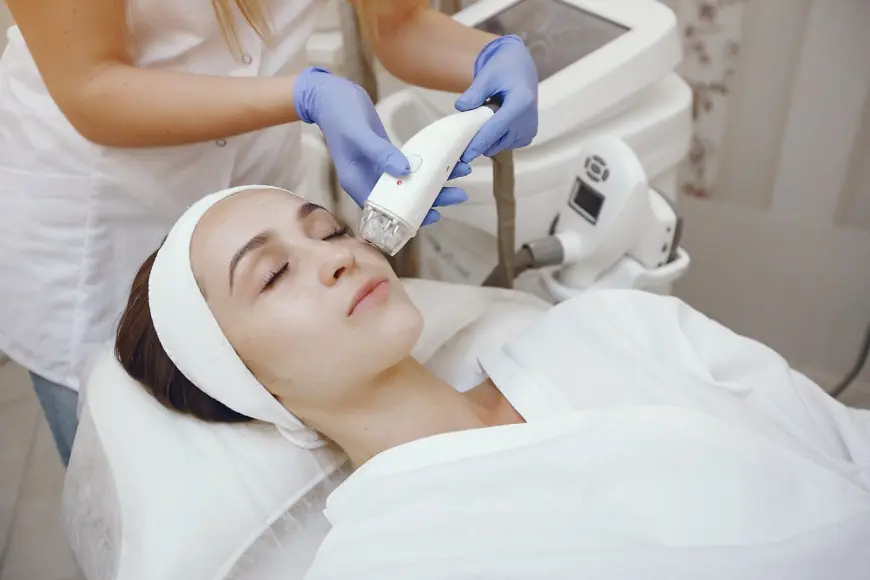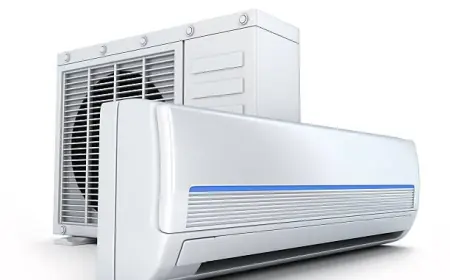Laser Skin Resurfacing: A Non-Surgical Solution for Clearer, Smoother Skin
Discover the benefits of laser skin resurfacing for clearer, smoother, and more youthful skin. Learn how this non-surgical treatment can address fine lines, acne scars, pigmentation, and sun damage for optimal skin rejuvenation.

Achieving clear, youthful, and smooth skin has become a common aspiration for many, with individuals seeking effective treatments to address skin imperfections. One of the most advanced and highly effective procedures in modern skincare is laser skin resurfacing. Known for its ability to improve skin tone, texture, and appearance, laser skin resurfacing has become a popular choice for individuals looking for a non-surgical solution to common skin concerns such as wrinkles, acne scars, pigmentation, and sun damage.
In this comprehensive article, we will explore the power of laser skin resurfacing as a non-invasive treatment, discussing how it works, its benefits, and why it is an ideal solution for people seeking clearer, smoother skin without the need for surgery.
What is Laser Skin Resurfacing?
Laser skin resurfacing is a non-invasive cosmetic procedure that uses high-intensity light to remove layers of damaged skin and promote the growth of healthier, smoother skin. It targets a variety of skin concerns, including fine lines, acne scars, pigmentation irregularities, and sun damage, making it a versatile treatment option.
There are two primary types of lasers used in skin resurfacing: ablative lasers and non-ablative lasers.
-
Ablative Lasers: These lasers, including Carbon Dioxide (CO2) and Erbium lasers, remove the outer layers of skin to treat deeper skin issues such as wrinkles, scars, and severe sun damage. These lasers offer more significant results but require a longer recovery period.
-
Non-Ablative Lasers: Non-ablative lasers, such as fractional CO2 lasers, work by targeting the deeper layers of the skin without damaging the outer layers. These lasers are ideal for addressing milder issues like fine lines, mild wrinkles, and pigmentation, with little to no downtime.
Both types of lasers work by stimulating collagen production in the skin, which helps to rejuvenate the skin and improve its overall appearance. By encouraging the growth of new skin cells and collagen fibers, laser skin resurfacing helps smooth the skin and restore a youthful glow.
How Does Laser Skin Resurfacing Work?
The process of laser skin resurfacing begins with a consultation with a qualified dermatologist or aesthetic professional. During this consultation, the provider assesses your skin concerns and goals to recommend the most appropriate treatment plan.
The procedure itself involves using a laser device that emits focused light onto the skin. The laser light penetrates the skin’s surface, creating tiny, controlled injuries that encourage the body’s natural healing process. This leads to the formation of new, healthy skin cells and the production of collagen, which provides structural support to the skin.
A topical numbing cream is usually applied to the treatment area before the procedure to minimize any discomfort, although deeper treatments may require local anesthesia. The treatment itself can take anywhere from 30 minutes to two hours, depending on the size of the area being treated.
The recovery time following laser skin resurfacing depends on the type of laser used. Non-ablative lasers usually require minimal downtime, with most patients resuming normal activities within a few days. Ablative lasers may require several days to a couple of weeks for the skin to fully heal, as they remove the outer layers of the skin.
Benefits of Laser Skin Resurfacing
Laser skin resurfacing is praised for its ability to address a variety of skin concerns and deliver remarkable results. Here are some of the primary benefits of this treatment:
1. Reduces Fine Lines and Wrinkles
One of the most notable benefits of laser skin resurfacing is its ability to reduce the appearance of fine lines and wrinkles. The treatment stimulates collagen production, which tightens and smooths the skin, helping to reduce wrinkles around the eyes, mouth, and forehead. By promoting skin regeneration, laser skin resurfacing can make you look years younger.
2. Improves Skin Tone and Texture
Uneven skin tone and texture are common concerns that many people face, particularly those who suffer from acne scars or sun damage. Laser skin resurfacing can help improve skin tone and texture by targeting hyperpigmentation, age spots, and sun spots. It also addresses issues like enlarged pores, giving the skin a more even and smooth appearance.
3. Treats Acne Scars
Laser skin resurfacing is highly effective in treating acne scars, which can leave deep indentations and uneven skin texture. The laser works by stimulating collagen production and promoting skin regeneration, which helps to fill in scar tissue and smooth out the skin. Over time, acne scars will become less visible, and the skin will look smoother and more youthful.
4. Reduces Sun Damage and Pigmentation
Sun exposure can lead to various forms of pigmentation, including age spots, freckles, and melasma. Laser skin resurfacing helps to target these pigmentation issues by removing the outer damaged layers of the skin and promoting new skin cell growth. This results in a more even skin tone and a reduction in sunspots and other pigmentation irregularities.
5. Non-Surgical and Minimal Downtime
Unlike surgical options like facelifts, laser skin resurfacing is a non-invasive treatment that doesn’t require cuts, incisions, or stitches. This makes it an attractive option for individuals who want to rejuvenate their skin without undergoing surgery. Moreover, depending on the type of laser used, recovery time is minimal, and many patients are able to return to their normal activities within a few days.
What to Expect During and After the Treatment
1. Pre-Treatment Preparation
Before undergoing laser skin resurfacing, it’s important to follow any pre-treatment guidelines provided by your dermatologist or skincare professional. These may include:
- Avoiding sun exposure for several weeks leading up to the treatment.
- Discontinuing the use of certain medications, such as blood thinners, that could interfere with healing.
- Informing your provider of any existing skin conditions or allergies.
2. The Treatment Process
During the procedure, the area to be treated will be cleansed, and a numbing cream may be applied to minimize discomfort. You may feel a slight tingling or warm sensation during the procedure, but the treatment is generally well-tolerated. The provider will move the laser device over the skin, targeting the areas that need treatment. The procedure typically lasts between 30 minutes and two hours, depending on the size of the treatment area.
3. Post-Treatment Care and Recovery
After the procedure, you may experience some redness, swelling, or mild discomfort, similar to a mild sunburn. For non-ablative lasers, the recovery time is relatively short, and you may resume daily activities within a few days. However, for more intensive treatments with ablative lasers, you may need up to two weeks for full recovery.
To promote healing, you will be instructed to follow a gentle skincare regimen, including:
- Applying a soothing ointment or moisturizer to the treated area.
- Using sunscreen to protect the skin from UV rays.
- Avoiding direct sun exposure until your skin has fully healed.
You may also experience peeling or flaking of the skin as the outer layers regenerate. This is a normal part of the healing process and should subside within a week or two.
Who is a Good Candidate for Laser Skin Resurfacing?
Laser skin resurfacing is suitable for individuals who have specific skin concerns they wish to address, including:
- Fine lines and wrinkles
- Acne scars
- Sunspots and age spots
- Uneven skin texture or pigmentation
The procedure is generally safe for all skin types, though individuals with darker skin tones should consult with a qualified provider to ensure the best treatment option is selected. If you have certain medical conditions, such as active acne or severe rosacea, you may need to wait until these conditions are under control before proceeding with laser resurfacing.
Conclusion
Laser skin resurfacing offers a powerful, non-surgical solution for anyone looking to improve the appearance of their skin. With its ability to reduce fine lines, smooth acne scars, and address sun damage, laser skin resurfacing is a versatile and effective treatment for achieving clearer, smoother skin.
Whether you are concerned with the signs of aging, acne scars, or pigmentation issues, laser skin resurfacing can help rejuvenate your skin and restore a youthful glow. Consult with a qualified skincare professional to determine if this treatment is right for you, and enjoy the benefits of smoother, more radiant skin.
What's Your Reaction?
 Like
0
Like
0
 Dislike
0
Dislike
0
 Love
0
Love
0
 Funny
0
Funny
0
 Angry
0
Angry
0
 Sad
0
Sad
0
 Wow
0
Wow
0




















































